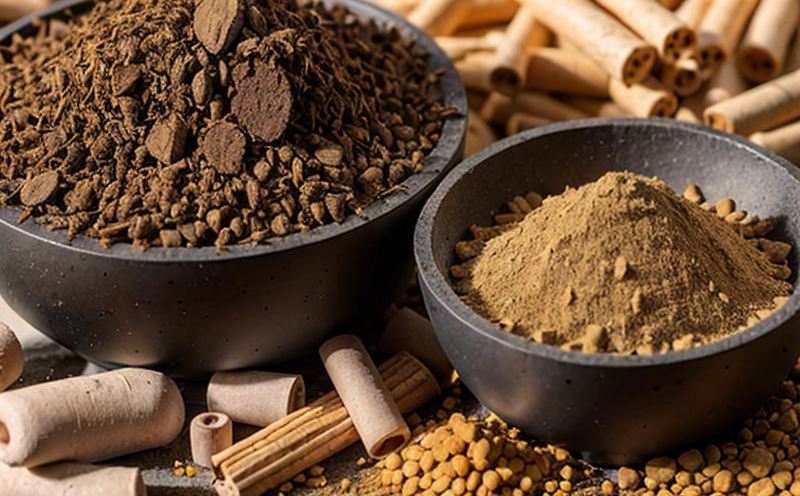ISO 18134 Determination of Moisture Content in Biomass
The ISO 18134 standard provides a precise and reliable method for determining the moisture content in biomass samples. This is crucial for ensuring the quality, consistency, and efficiency of biomass processing and utilization across various sectors, including energy production, agriculture, and environmental management.
Biomass moisture content significantly influences its calorific value, combustion performance, and storage stability. Inaccurate moisture readings can lead to financial losses, suboptimal operational conditions, and reduced product quality. By adhering to ISO 18134, laboratories ensure accurate moisture content determinations that are essential for compliance with international standards and industry best practices.
This service is particularly valuable for stakeholders in the energy sector, where biomass is used as a renewable fuel source. Accurate moisture content measurement allows for efficient drying processes, optimized combustion ratios, and better prediction of emissions. For R&D engineers, this method provides critical data for developing new technologies and improving existing systems.
The testing process involves several steps that must be executed with precision to ensure reliable results. Specimen preparation is the first step, where samples are taken from larger biomass lots using representative sampling techniques. The prepared specimens undergo drying in an oven set at a specific temperature (103 ± 2 °C), which is a critical parameter for accurate moisture measurement.
After drying, the specimen weight is measured before and after the drying process to calculate the moisture content based on the difference in mass. This method ensures that only volatile water is considered, providing an accurate measure of the biomass's inherent moisture content.
The accuracy and precision of this test are paramount for ensuring reliable results. Factors such as oven temperature control, sample size, and humidity levels during specimen preparation play crucial roles in achieving consistent and repeatable results. Proper calibration of equipment and adherence to standardized procedures are essential components of this testing process.
The ISO 18134 standard is widely recognized for its robustness and reliability across different types of biomass materials. This includes various forms such as wood pellets, sawdust, straw bales, and other agricultural residues. By adopting this method, laboratories can ensure consistency in their moisture content measurements, which is critical for meeting regulatory requirements and maintaining high-quality standards.
The testing process not only aids in quality control but also supports the development of sustainable biomass utilization practices. Accurate moisture content data helps optimize drying processes, reduce waste, and improve overall operational efficiency. For procurement teams, this service ensures that they receive materials with consistent quality, which is essential for long-term contracts and supply chain reliability.
The precision and accuracy of ISO 18134 are validated through rigorous testing protocols and adherence to international standards. Laboratories using this method can ensure that their results are comparable across different laboratories and jurisdictions, enhancing trust and confidence in the measurement process.
Applied Standards
| Standard Number | Title |
|---|---|
| ISO 18134 | Determination of moisture content in biomass |
The ISO 18134 standard ensures that the determination of moisture content is conducted using a standardized and reliable method. This standard is widely accepted and used by laboratories around the world, ensuring consistent and accurate results.
Quality and Reliability Assurance
The ISO 18134 method for determining moisture content in biomass is designed to ensure high-quality and reliable results. The testing process involves several critical steps that must be followed meticulously to achieve accurate outcomes.
- Representative sampling of the biomass material
- Drying specimens at a constant temperature (103 ± 2 °C)
- Precise measurement of specimen weight before and after drying
- Careful calibration and maintenance of laboratory equipment
- Adherence to standardized procedures throughout the testing process
By following these steps, laboratories can ensure that their moisture content determinations are accurate and reliable. This method is particularly important for meeting regulatory requirements and maintaining high-quality standards in biomass processing.
The accuracy of ISO 18134 results is validated through rigorous testing protocols and adherence to international standards. Laboratories using this method can expect consistent and comparable results, enhancing trust and confidence in the measurement process.
International Acceptance and Recognition
- The ISO 18134 standard is widely recognized by international bodies such as the International Organization for Standardization (ISO).
- This method is accepted in numerous countries, including major industrial and agricultural nations.
- Laboratories that adhere to this standard are able to ensure consistency in their moisture content measurements across different jurisdictions.
- The use of ISO 18134 enhances trust and confidence in the measurement process, which is crucial for global trade and collaboration.
By adopting this internationally recognized method, laboratories can ensure that their results are accepted worldwide, fostering a seamless exchange of information and products across borders.





